
Java_J2EE_Job_Interview_Companion
.pdf
80 Java – Performance and Memory issues
//Inefficient code
public boolean isInYearCompanyWasEstablished(Date dateSupplied) { Calendar cal = Calendar.getInstance();
cal.set(1998, Calendar.JAN, 01,0,0,0); //Should be read from a .proprerties file Date yearStart = cal.getTime();
cal.setTime(1998,Calendar.DECEMBER, 31,0,0,0);//Should be read from .properties. Date yearEnd = cal.getTime();
return |
dateSupplied.compareTo(yearStart) >=0 |
&& |
} |
dateSupplied.compareTo(yearEnd) <= 0; |
|
|
|
The above code is inefficient because every time this method is invoked 1 “Calendar” object and two “Date” objects are unnecessarily created. If this method is invoked 50 times in your application then 50 “Calendar” objects and 100 “Date” objects are created. A more efficient code can be written as shown below using a static initializer block:
//efficient code
private static final YEAR_START; private static final YEAR_END;
static{
Calendar cal = Calendar.getInstance();
cal.set(1998, Calendar.JAN, 01,0,0,0); //Should be read from a .proprerties file Date YEAR_START = cal.getTime();
cal.setTime(1998,Calendar.DECEMBER, 31,0,0,0);//Should be read from .properties. Date YEAR_END = cal.getTime();
}
public boolean isInYearCompanyWasEstablished(Date dateSupplied) { return dateSupplied.compareTo(YEAR_START) >=0 &&
dateSupplied.compareTo(YEAR_END) <= 0;
}
No matter, how many times you invoke the method isInYearCompanyWasEstablished(…), only 1 “Calendar” object 2 “Date” objects are created, since the static initializer block is executed only once when the class is loaded into the JVM.
oMinimize JNI calls in your code.
Q. When in the development process should you consider performance issues?
Set performance requirements in the specifications, include a performance focus in the analysis and design and also create a performance test environment.
Q. When designing your new code, what level of importance would you give to the following attributes?
--Performance
--Maintainability
--Extendibility
--Ease of use
--Scalability
You should not compromise on architectural principles for just performance. You should make effort to write architecturally sound programs as opposed to writing only fast programs. If your architecture is sound enough then it would allow your program not only to scale better but also allows it to be optimized for performance if it is not fast enough. If you write applications with poor architecture but performs well for the current requirements, what will happen if the requirements grow and your architecture is not flexible enough to extend and creates a maintenance nightmare where fixing a code in one area would break your code in another area. This will cause your application to be re-written. So you should think about extendibility (i.e. ability to evolve with additional requirements), maintainability, ease of use, performance and scalability (i.e. ability to run in multiple servers or machines) during the design phase. List all possible design alternatives and pick the one which is conducive to sound design architecturally (i.e. scalable, easy to use, maintain and extend) and will allow it to be optimized later if not fast enough. You can build a vertical slice first to validate the above mentioned design attributes as discussed in Q82 in the Java section.
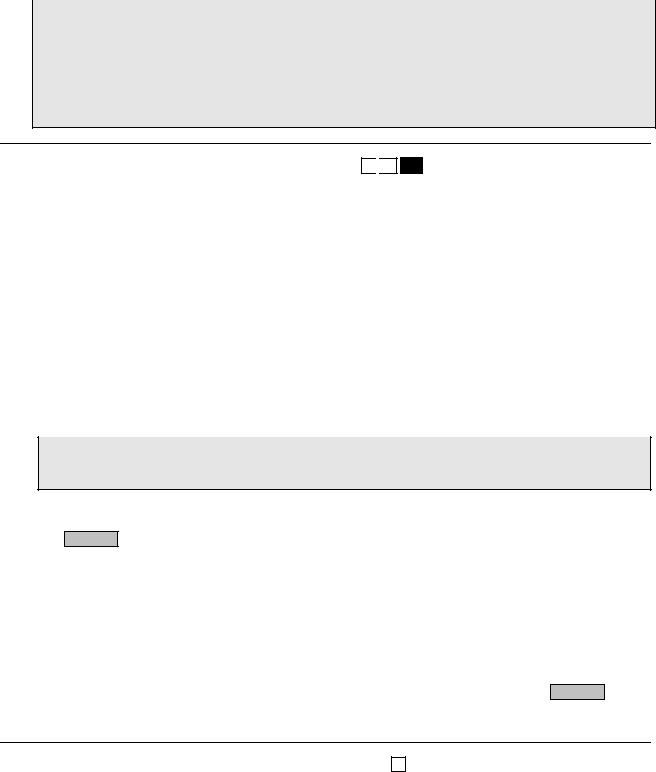
Java – Performance and Memory issues |
81 |
Q. Rank the above attributes in order of importance?
There is no one correct answer for this question. [Hint] It can vary from application to application but typically if you write 1 - extendable, 2 - maintainable and 3 – ease of use code with some high level performance considerations, then it should allow you to optimize/tune for 4 - performance and 5 - scale. But if you write a code, which only performs fast but not flexible enough to grow with the additional requirements, then you may end up rewriting or carrying out a major revamp to your code. Refer SOA (Service Oriented Architecture) Q15 in How would you go about… section.
Q 73: How would you detect and minimize memory leaks in Java? MI
 BP FAQ
BP FAQ
A 73: In Java, memory leaks are caused by poor program design where object references are long lived and the garbage collector is unable to reclaim those objects.
Detecting memory leaks:
Use tools like JProbe, OptimizeIt etc to detect memory leaks.
Use operating system process monitors like task manager on NT systems, ps, vmstat, iostat, netstat etc on UNIX systems.
Write your own utility class with the help of totalMemory() and freeMemory() methods in the Java Runtime class. Place these calls in your code strategically for pre and post memory recording where you suspect to be causing memory leaks. An even better approach than a utility class is using dynamic proxies (Refer Q11 in How would you go about section…) or Aspect Oriented Programming (AOP) for pre and post memory recording where you have the control of activating memory measurement only when needed. (Refer Q3 – Q5 in Emerging Technologies/Frameworks section).
Minimizing memory leaks:
In Java, typically memory leak occurs when an object of a longer lifecycle has a reference to objects of a short life cycle. This prevents the objects with short life cycle being garbage collected. The developer must remember to remove the references to the short-lived objects from the long-lived objects. Objects with the same life cycle do not cause any issues because the garbage collector is smart enough to deal with the circular references (Refer Q38 in Java section).
Design applications with an object’s life cycle in mind, instead of relying on the clever features of the JVM. Letting go of the object’s reference in one’s own class as soon as possible can mitigate memory problems. Example: myRef = null;
Unreachable collection objects can magnify a memory leak problem. In Java it is easy to let go of an entire collection by setting the root of the collection to null. The garbage collector will reclaim all the objects (unless some objects are needed elsewhere).
Use weak references (Refer Q37 in Java section) if you are the only one using it. The WeakHashMap is a combination of HashMap and WeakReference. This class can be used for programming problems where you need to have a HashMap of information, but you would like that information to be garbage collected if you are the only one referencing it.
Free native system resources like AWT frame, files, JNI etc when finished with them. Example: Frame, Dialog, and Graphics classes require that the method dispose() be called on them when they are no longer used, to free up the system resources they reserve.
Q 74: Why does the JVM crash with a core dump or a Dr.Watson error? MI
A 74: Any problem in pure Java code throws a Java exception or error. Java exceptions or errors will not cause a core dump (on UNIX systems) or a Dr.Watson error (on WIN32systems). Any serious Java problem will result in an OutOfMemoryError thrown by the JVM with the stack trace and consequently JVM will exit. These Java stack traces are very useful for identifying the cause for an abnormal exit of the JVM. So is there a way to know that OutOfMemoryError is about to occur? The Java J2SE 5.0 has a package called java.lang.management which has useful JMX beans that we can use to manage the JVM. One of these beans is the MemoryMXBean.
An OutOfMemoryError can be thrown due to one of the following 4 reasons:

82 |
Java – Performance and Memory issues |
JVM may have a memory leak due to a bug in its internal heap management implementation. But this is highly unlikely because JVMs are well tested for this.
The application may not have enough heap memory allocated for its running. You can allocate more JVM heap size (with –Xmx parameter to the JVM) or decrease the amount of memory your application takes to overcome this. To increase the heap space:
java -Xms1024M -Xmx1024M
Care should be taken not to make the –Xmx value too large because it can slow down your application. The secret is to make the maximum heap size value the right size.
Another not so prevalent cause is the running out of a memory area called the “perm” which sits next to the heap. All the binary code of currently running classes is archived in the “perm” area. The ‘perm’ area is important if your application or any of the third party jar files you use dynamically generate classes. For example: “perm” space is consumed when XSLT templates are dynamically compiled into classes, J2EE application servers, JasperReports, JAXB etc use Java reflection to dynamically generate classes and/or large amount of classes in your application. To increase perm space:
java -XX:PermSize=256M -XX:MaxPermSize=256M
The fourth and the most common reason is that you may have a memory leak in your application as discussed in Q73 in Java section.
[Good read/reference: “Know your worst friend, the Garbage Collector” http://java.syscon.com/read/84695.htm by Romain Guy]
Q. So why does the JVM crash with a core dump or Dr.Watson error?
Both the core dump on UNIX operating system and Dr.Watson error on WIN32 systems mean the same thing. The JVM is a process like any other and when a process crashes a core dump is created. A core dump is a memory map of a running process. This can happen due to one of the following reasons:
Using JNI (Java Native Interface) code, which has a fatal bug in its native code. Example: using Oracle OCI drivers, which are written partially in native code or JDBC-ODBC bridge drivers, which are written in non Java code. Using 100% pure Java drivers (communicates directly with the database instead of through client software utilizing the JNI) instead of native drivers can solve this problem. We can use Oracle thin driver, which is a 100% pure Java driver.
The operating system on which your JVM is running might require a patch or a service pack.
The JVM implementation you are using may have a bug in translating system resources like threads, file handles, sockets etc from the platform neutral Java byte code into platform specific operations. If this JVM’s translated native code performs an illegal operation then the operating system will instantly kill the process and mostly will generate a core dump file, which is a hexadecimal file indicating program’s state in memory at the time of error. The core dump files are generated by the operating system in response to certain signals. Operating system signals are responsible for notifying certain events to its threads and processes. The JVM can also intercept certain signals like SIGQUIT which is kill -3 < process id > from the operating system and it responds to this signal by printing out a Java stack trace and then continue to run. The JVM continues to run because the JVM has a special built-in debug routine, which will trap the signal -3. On the other hand signals like SIGSTOP (kill -23 <process id>) and SIGKILL (kill -9 <process id>) will cause the JVM process to stop or die. The following JVM argument will indicate JVM not to pause on SIGQUIT signal from the operating system.
java –Xsqnopause
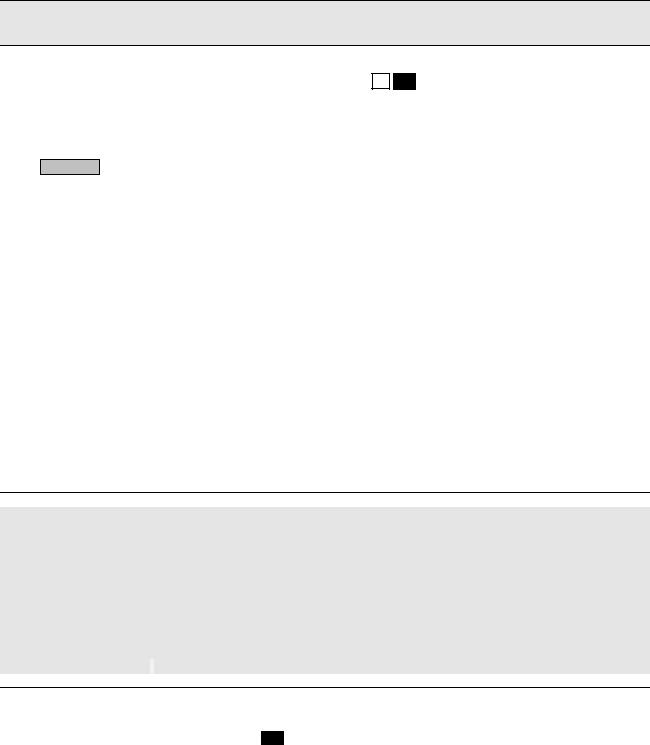
Java – Personal and Behavioral/Situational |
83 |
Java – Personal and Behavioral/Situational
Q 75: Did you have to use any design patterns in your Java project? DP FAQ
A 75: Yes. Refer Q12 [Strategy], Q16 [Iterator], Q24 [Decorator], Q36 [Visitor], Q51 [Singleton], Q52 [Factory], Q58 [Command], Q61 [Composite], and Q63 [MVC-Model View Controller] in Java section and Q11, Q12 in How would you go about… section for a detailed discussion on design patterns with class diagrams and examples.
Resource: http://www.patterndepot.com/put/8/JavaPatterns.htm.
Why use design patterns, you may ask (Refer Q5 in Enterprise section). Design patterns are worthy of mention in your CV and interviews. Design patterns have a number of advantages:
Capture design experience from the past.
Promote reuse without having to reinvent the wheel.
Define the system structure better.
Provide a common design vocabulary.
Some advice if you are just starting on your design pattern journey:
If you are not familiar with UML, now is the time. UML is commonly used to describe patterns in pattern catalogues, including class diagrams, sequence diagrams etc. (Refer Q106 - Q109 in Enterprise section).
When using patterns, it is important to define a naming convention. It will be much easier to manage a project as it grows to identify exactly what role an object plays with the help of a naming convention e.g. AccountFacilityBusinessDelegate, AccountFacilityFactory, AccountFacilityValueObject, AccountDecorator, AccountVisitor, AccountTransferObject (or AccountFacilityVO or AccountTO).
Make a list of requirements that you will be addressing and then try to identify relevant patterns that are applicable. You should not just apply a pattern for the sake of learning or applying a pattern because it could become an anti-pattern.
IMPORTANT: Technical skills alone are not sufficient for you to perform well in your interviews and progress in your career. Your technical skills must be complemented with business skills (i.e. knowledge/understanding of the business, ability to communicate and interact effectively with the business users/customers, ability to look at things from the user’s perspective as opposed to only technology perspective, ability to persuade/convince business with alternative solutions, which can provide a win/win solution from users’ perspective as well as technology perspective), ability to communicate effectively with your fellow developers, immediate and senior management, ability to work in a team as well as independently, problem solving/analytical skills, organizational skills, ability to cope with difficult situations like stress due to work load, deadlines etc and manage or deal with difficult people, being a good listener with the right attitude (It is sometimes possible to have “I know it all attitude”, when you have strong technical skills. This can adversely affect your ability to be a good listener, ability to look at things in a different perspective, ability to work well in a team and consequently your progression in your career) etc. Some of these aspects are covered below and should be prepared for prior to your job interview(s).
Q 76: Tell me about yourself or about some of the recent projects you have worked with? What do you consider your most significant achievement? Why do you think you are qualified for this position? Why should we hire you and what kind of contributions will you make? FAQ
A 76: [Hint:] Pick your recent projects and enthusiastically brief on it. Interviewer will be looking for how passionate you are about your past experience and achievements. Also is imperative that during your briefing, you demonstrate on a high level(without getting too technical) how you applied your skills and knowledge in some of the following key areas:
Design concepts and design patterns: How you understood and applied them.
Performance and memory issues: How you identified and fixed them.
Exception handling and best practices: How you understood and applied them.
Multi-threading and concurrent access: How you identified and fixed them.

84 |
Java – Personal and Behavioral/Situational |
Some of the questions in this section can help you prepare your answers by relating them to your current or past work experience. For example:
Design Concepts: Refer Q7, Q8, Q9, Q10, Q11 etc
Design Patterns: Refer Q12, Q16, Q24, Q36, Q51, Q52, Q58, Q61, and Q63 in Java section and Q11, Q12 in “How would you go about…?” section for a more detailed discussion.
Performance issues: Refer Q25, Q72 etc
Memory issues: Refer Q37, Q38, Q42, Q73, and Q74
Exception Handling: Refer Q39, Q40 etc
Multi-threading (Concurrency issues): Refer Q15, Q17, Q21, Q34, Q42 and Q46 etc
Demonstrating your knowledge in the above mentioned areas will improve your chances of being successful in your Java/J2EE interviews. 90% of the interview questions are asked based on your own resume. So in my view it is also very beneficial to mention how you demonstrated your knowledge/skills by stepping through a recent project on your resume.
The two other areas, which I have not mentioned in this section, which are also very vital, are transactions and security. These two areas will be covered in the next section, which is the Enterprise section (J2EE, JDBC, EJB, JMS, SQL, XML etc).
Even if you have not applied these skills knowingly or you have not applied them at all, just demonstrating that you have the knowledge and an appreciation will help you improve your chances in the interviews. Also mention any long hours worked to meet the deadline, working under pressure, fixing important issues like performance issues, running out of memory issues etc.
The job seekers should also ask questions to make an impression on the interviewer. Write out specific questions you want to ask and then look for opportunities to ask them during the interview. For example:
Do you have any performance or design related issues? Æ Succinctly demonstrate how you would go about solving them or how you solved similar problems in your previous assignments.
Do you follow any software development processes like agile methodology, XP, RUP etc? Æ Briefly demonstrate your experience, understanding and/or familiarity with the development methodology of relevance.
Do you use any open source frameworks like Spring, Hibernate, Tapestry etc? Any build tools like Ant, Maven etc, and testing tools like JUnit etc Æ briefly demonstrate your experience, understanding and/or familiarity with the framework(s) of relevance.
Many interviewers end with a request to the applicant as to whether they have anything they wish to add. This is an opportunity for you to end on a positive note by making succinct statements about why you are the best person for the job by demonstrating your understanding of the key areas and how you applied them in your previous jobs.
Reflect back on your past jobs and pick two to five instances where you used your skills in the key areas very successfully.
Q 77: Why are you leaving your current position? FAQ
A 77: [Hint]
Do not criticize your previous employer or co-workers or sound too opportunistic.
It is fine to mention a major problem like a buy out, budget constraints, merger or liquidation.
You may also say that your chance to make a contribution is very low due to company wide changes or looking for a more challenging senior or designer role.
Q 78: What do you like and/or dislike most about your current and/or last position? FAQ
A 78: [Hint]
The interviewer is trying to find the compatibility with the open position. So
Do not say anything like:
You dislike overtime.
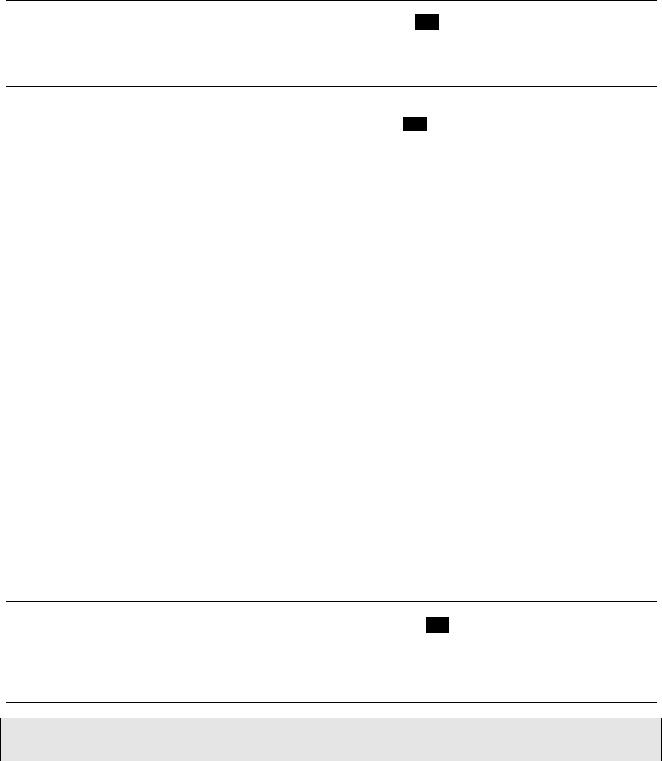
Java – Personal and Behavioral/Situational |
85 |
You dislike management or co-workers etc. It is safe to say:
You like challenges.
Opportunity to grow into design, architecture, performance tuning etc
Opportunity to learn and/or mentor junior developers..
You dislike frustrating situations like identifying a memory leak problem or a complex transactional or a concurrency issue. You want to get on top of it as soon as possible.
Q 79: How do you handle pressure? Do you like or dislike these situations? FAQ
A 79: [Hint] These questions could mean that the open position is pressure-packed and may be out of control. Know what you are getting into. If you do perform well under stress then give a descriptive example. High achievers tend to perform well in pressure situations.
Q 80: What are your strengths and weaknesses? Can you describe a situation where you took initiative? Can you describe a situation where you applied your problem solving skills? FAQ
A 80: [Hint]
Strengths:
Taking initiatives and being pro-active: You can illustrate how you took initiative to fix a transactional issue, a performance problem or a memory leak problem.
Design skills: You can illustrate how you designed a particular application using OO concepts.
Problem solving skills: Explain how you will break a complex problem into more manageable sub-sections and then apply brain storming and analytical skills to solve the complex problem. Illustrate how you went about identifying a scalability issue or a memory leak problem.
Communication skills: Illustrate that you can communicate effectively with all the team members, business analysts, users, testers, stake holders etc.
Ability to work in a team environment as well as independently: Illustrate that you are technically sound to work independently as well as have the interpersonal skills to fit into any team environment.
Hard working, honest, and conscientious etc are the adjectives to describe you.
Weaknesses:
Select a trait and come up with a solution to overcome your weakness. Stay away from personal qualities and concentrate more on professional traits for example:
I pride myself on being an attention to detail guy but sometimes miss small details. So I am working on applying the 80/20 principle to manage time and details. Spend 80% of my effort and time on 20% of the tasks, which are critical and important to the task at hand.
Some times when there is a technical issue or a problem I tend to work continuously until I fix it without having a break. But what I have noticed and am trying to practice is that taking a break away from the problem and thinking outside the square will assist you in identifying the root cause of the problem sooner.
Q 81: What are your career goals? Where do you see yourself in 5-10 years? FAQ
A 81: [Hint] Be realistic. For example
Next 2-3 years to become a senior developer or a team lead.
Next 3-5 years to become a solution designer or an architect.
Situational questions: The open-ended questions like last two questions are asked by interviewers to identify specific characteristics like taking initiative, performance standards, accountability, adaptability, flexibility, sensitivity, communication skills, ability to cope stress etc. These questions are known as behavioral or situational questions. This
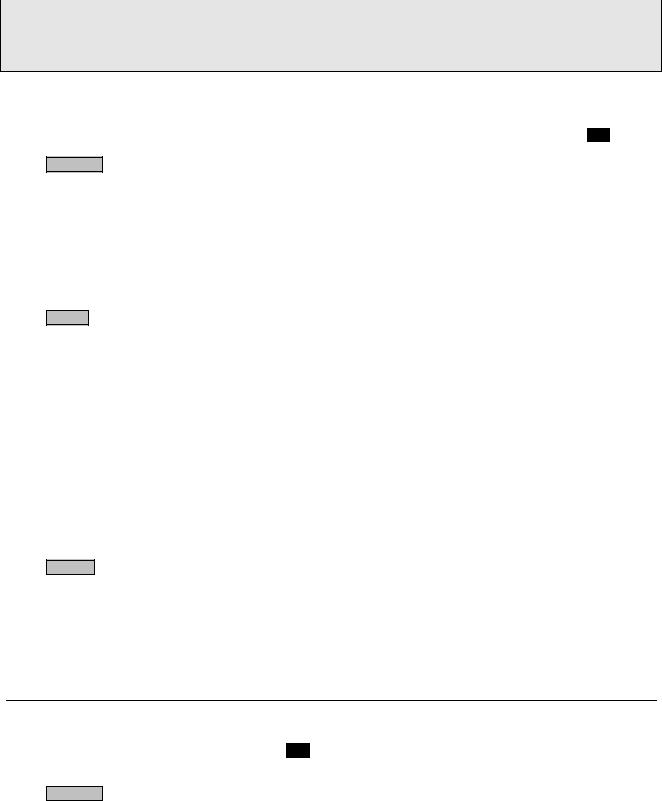
86 |
Java – Personal and Behavioral/Situational |
behavioral technique is used to evaluate a candidate’s future success from past behaviors. The answers to these questions must describe in detail a particular situation like an event, a project or an experience and how you acted on that situation and what the results were. Prepare your answers prior to the interview using the “Situation Action Result (SAR)” approach and avoid fabricating or memorizing your answers. You should try to relate back to your past experiences at your previous employments, community events, sporting events etc. Sample questions and answers are shown below:
Q 82: Give me an example of a time when you set a goal and were able to achieve it? Give me an example of a time you showed initiatiative and took the lead? Tell me about a difficult decision you made in the last year? Give me an example of a time you motivated others? Tell me about a most complex project you were involved in? FAQ
A 82:
Situation: When you were working for the ZCC Software Technology Corporation, the overnight batch process called the “Data Pacakager” was developed for a large fast food chain which has over 100 stores. This overnight batch process is responsible for performing a very database intensive search and compute changes like cost of ingredients, selling price, new menu item etc made in various retail stores and package those changes into XML files and send those XML data to the respective stores where they get uploaded into their point of sale registers to reflect the changes. This batch process had been used for the past two years, but since then the number of stores had increased and so did the size of the data in the database. The batch process, which used to take 6-8 hours to complete, had increased to 14-16 hours, which obviously started to adversely affect the daily operations of these stores. The management assigned you with the task of improving the performance of the batch process to 5-6 hours (i.e. suppose to be an overnight process).
Action: After having analyzed the existing design and code for the “Data Packager”, you had to take the difficult decision to let the management know that this batch process needed to be re-designed and re-written as opposed to modifying the existing code, since it was poorly designed. It is hard to extend, maintain (i.e. making a change in one place can break the code some where else and so on) and had no object reuse through caching (makes too many unnecessary network trips to the database) etc. The management was not too impressed with this approach and concerned about the time required to rewrite this batch process since the management had promised the retail stores to provide a solution within 8-12 weeks. You took the initiative and used your persuasive skills to convince the management that you would be able to provide a re-designed and re-written solution within the 8-12 weeks with the assistance of 2-3 additional developers and two testers. You were entrusted with the task to rewrite the batch process and you set your goal to complete the task in 8 weeks. You decided to build the software iteratively by building individual vertical slices as opposed to the big bang waterfall approach [Refer subsection “Enterprise – Software development process” in Enterprise – Java section]. You redesigned and wrote the code for a typical use case from end to end (i.e. full vertical slice) within 2 weeks and subsequently carried out functional and integration testing to iron out any unforeseen errors or issues. Once the first iteration is stable, you effectively communicated the architecture to the management and to your fellow developers. Motivated and mentored your fellow developers to build the other iterations, based on the first iteration. At the end of iteration, it was tested by the testers, while the developers moved on to the next iteration.
Results: After having enthusiastically worked to your plan with hard work, dedication and teamwork, you were able to have the 90% of the functionality completed in 9 weeks and spent the next 3 weeks fixing bugs, tuning performance and coding rest of the functionality. The fully functional data packager was completed in 12 weeks and took only 3-4 hours to package XML data for all the stores. The team was under pressure at times but you made them believe that it is more of a challenge as opposed to think of it as a stressful situation. The newly designed data packager was also easier to maintain and extend. The management was impressed with the outcome and rewarded the team with an outstanding achievement award. The performance of the newly developed data packager was further improved by 20% by tuning the database (i.e. partitioning the tables, indexing etc).
Q 83: Describe a time when you were faced with a stressful situation that demonstrated your coping skills? Give me an example of a time when you used your fact finding skills to solve a problem? Describe a time when you applied your analytical and/or problem solving skills? FAQ
A 83:
Situation: When you were working for the Surething insurance corporation pty ltd, you were responsible for the migration of an online insurance application (i.e. external website) to a newer version of application server (i.e. the current version is no longer supported by the vendor). The migration happened smoothly and after a couple of days of going live, you started to experience “OutOfMemoryError”, which forced you to restart the application server every day. This raised a red alert and the immediate and the senior management were very concerned and consequently constantly calling for meetings and updates on the progress of identifying the root cause of this issue. This has created a stressful situation.
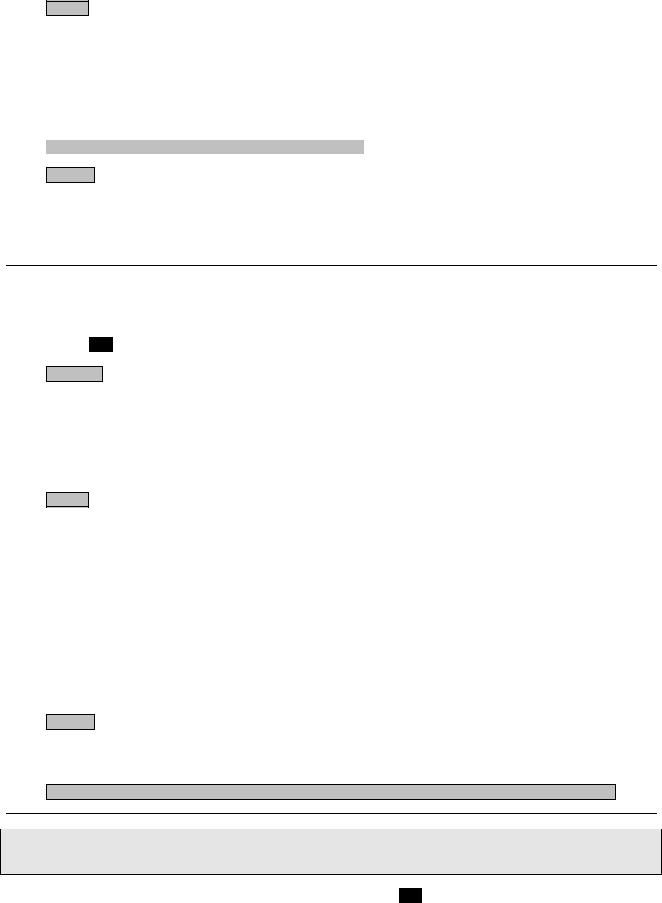
Java – Personal and Behavioral/Situational |
87 |
Action: You were able to have a positive outlook by believing that this is more of a challenge as opposed to think of it as a stressful situation. You needed to be composed to get your analytical and problem solving skills to get to work. You spent some time finding facts relating to “OutOfMemoryError” (Refer Q74 in Java section). You were tempted to increase the heap space as suggested by fellow developers but the profiling and monitoring did not indicate that was the case. The memory usage drastically increased during and after certain user operations like generating PDF reports. The generation of reports used some third party libraries, which dynamically generated classes from your templates. So you decided to increase the area of the memory known as the “perm”, which sits next to the heap. This “perm” space is consumed when the classes are dynamically generated from templates during the report generation.
java -XX:PermSize=256M -XX:MaxPermSize=256M
Results: After you have increased the “perm” size, the “OutOfMemoryError” has disappeared. You kept monitoring it for a week and everything worked well. The management was impressed with your problem solving, fact finding and analytical skills, which had contributed to the identification of the not so prevalent root cause and the effective communication with the other teams like infrastructure, production support, senior management, etc. The management also identified your ability to cope under stress and offered you a promotion to lead a small team of 4 developers.
Q 84: Describe a time when you had to work with others in the organization to accomplish the organizational goals? Describe a situation where others you worked on a project disagreed with your ideas, and what did you do? Describe a situation in which you had to collect information by asking many questions of several people? What has been your experience in giving presentations to small or large groups? How do you show considerations for others? FAQ
A 84:
Situation: You were working for Wealth guard Pty Ltd financial services organization. You were part of a development team responsible for enhancing an existing online web application, which enables investors and advisors view and manage their financial portfolios. The websites of the financial services organizations are periodically surveyed and rated by an independent organization for their ease of use, navigability, content, search functionality etc. Your organization was ranked 21st among 23 websites reviewed. Your chief information officer was very disappointed with this poor rating and wanted the business analysts, business owners (i.e. within the organization) and the technical staff to improve on the ratings before the next ratings, which would be done in 3 months.
Action: The business analysts and the business owners quickly got into work and came up with a requirements list of 35 items in consultation with the external business users such as advisors, investors etc. You were assigned the task of working with the business analysts, business owners (i.e internal), and project managers to provide a technical input in terms of feasibility study, time estimates, impact analysis etc. The business owners had a preconceived notion of how they would like things done. You had to analyze the outcome from both the business owners’ perspective and technology perspective. There were times you had to use your persuasive skills to convince the business owners and analysts to take an alternative approach, which would provide a more robust solution. You managed to convince the business owners and analysts by providing visual mock-up screen shots of your proposed solution, presentation skills, ability to communicate without any technical jargons, and listening carefully to business needs and discussing your ideas with your fellow developers (i.e. being a good listener, respecting others’ views and having the right attitude even if you know that you are right). You also strongly believe that good technical skills must be complemented with good interpersonal skills and the right attitude. After 2-3 weeks of constant interaction with the business owners, analysts and fellow developers, you had helped the business users to finalize the list of requirements. You also took the initiative to apply the agile development methodology to improve communication and cooperation between business owners and the developers.
Results: You and your fellow developers were not only able to effectively communicate and collaborate with the business users and analysts but also provided progressive feedback to each other due to iterative approach. The team work and hard work had resulted in a much improved and more user friendly website, which consequently improved its ratings from 21st to 13th within 3 months.
Refer Enterprise – Personal subsection in Enterprise section for more situational questions and answers.
Note: For Q75 – Q84 tailor your answers to the job. Also be prepared for the following questions, which ascertain how you keep your knowledge up to date, what motivates you, your ability to take initiatives, be pro-active, eagerness to work for the company, etc:
Q 85: What was the last Java related technical book or article you read? FAQ
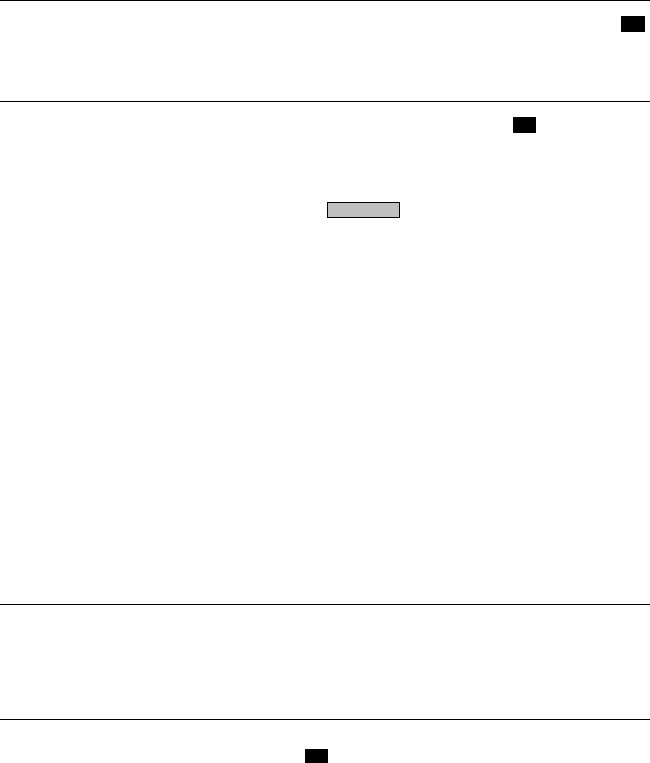
88 |
Java – Personal and Behavioral/Situational |
A 85:
Mastering EJB by Ed Roman.
EJB design patterns by Floyd Marinescu.
Bitter Java by Bruce Tate.
Thinking in Java by Bruce Eckel.
Effective Java by Joshua Bloch.
Q. What is your favorite technical book? Effective Java by Joshua Bloch
Q 86: Which Java related website(s) or resource(s) do you use to keep your knowledge up to date beyond Google? FAQ
A 86:
http://www.theserverside.com, http://www.javaworld.com, http://www-136.ibm.com/developerworks/Java, http://www.precisejava.com, http://www.allapplabs.com, http://java.sun.com, http://www.martinfowler.com, http://www.ambysoft.com etc.
Q 87: What past accomplishments gave you satisfaction? What makes you want to work hard? FAQ
A 87:
Material rewards such as salary, perks, benefits etc naturally come into play but focus on your achievements or accomplishments than on rewards.
Explain how you took pride in fixing a complex performance issue or a concurrency issue. You could substantiate your answer with a past experience. For example while you were working for Bips telecom, you pro-actively identified a performance issue due to database connection resource leak. You subsequently took the initiative to notify your team leader and volunteered to fix it by adding finally {} blocks to close the resources. [Discussed in the Enterprise Java section]
If you are being interviewed for a position, which requires your design skills then you could explain that in your previous job with an insurance company you had to design and develop a sub-system, which gave you complete satisfaction. You were responsible for designing the data model using entity relationship diagrams (E-R diagrams) and the software model using the component diagrams, class diagrams, sequence diagrams etc. [Discussed in the Enterprise Java section]
If you are being interviewed for a position where you have to learn new pieces of technology/framework like dependency injection (e.g. Spring framework), component based web development frameworks like Tapestry, JSF etc, object to relational mapping frameworks like hibernate etc then you can explain with examples from your past experience where you were not only motivated to acquire new skills/knowledge but also proved that you are a quick and a pro-active learner. [Discussed in the Emerging Technologies/Frameworks section]
If the job you are being interviewed for requires production support from time to time, then you could explain that it gives you satisfaction because you would like to interact with the business users and/or customers to develop your business and communication skills by getting an opportunity to understand a system from the users perspective and also gives you an opportunity to sharpen your technical and problem solving skills. If you are a type of person who enjoys more development work then you can be honest about it and indicate that you would like to have a balance between development work and support work, where you can develop different aspects of your skills/knowledge. You could also reflect an experience from a past job, where each developer was assigned a weekly roster to provide support.
You could say that, you generally would like to work hard but would like to work even harder when there are challenges.
Q 88: Do you have any role models in software development?
A 88:
Scott W. Ambler, Martin Fowler, Ed Roman, Floyd Marinescu, Grady Booch etc.
Gavin King (Hibernate persistence framework), Rod Johnson (Spring framework), Howard M. Lewis Ship (Tapestry web framework and Hivemind framework), Dennis Sosnoski (JiBX XML binding framework) etc.
Q 89: Why do you want to work for us? What motivates you? What demotivates you? What are you looking for in your next job? What is your definition of an ideal job? FAQ (Research the company prior to the interview). Look at their website. Know their product lines and their competitors. Learn about their achievements or strengths.

Java – Behaving right in an interview |
89 |
Java – Behaving right in an interview
Arrive 5-10 minutes before the interview. Never arrive too late or too early. If you are running late due to some unavoidable situation, call ahead and make sure that the interviewers know your situation. Also, be apologetic for arriving late due to unfortunate situation.
First impressions are everything: Firm handshake, maintain eye contact, smile, watch your body language, be pleasant, dress neatly and know the names of your interviewers and thank them by their names for the opportunity.
Try, not to show that you are nervous. Every body is nervous for interviews but try not to show it. [Hint: Just think that even if you do not get the job, it is a good learning experience and you would do better in your next interview and appreciate yourself for getting this far. You can always learn from your mistakes and do better at your next interview.]
It is good to be confident but do not make up your answer or try to bluff. If you put something in your resume then better be prepared to back it up. Be honest to answer technical questions because you are not expected to remember everything (for example, you might know a few design patterns but not all of them etc). If you have not used a design pattern in question, request the interviewer, if you could describe a different design pattern. Also, try to provide brief answers, which means not too long and not too short like yes or no. Give examples of times you performed that particular task. If you would like to expand on your answer, ask the interviewer if you could elaborate or go on. It is okay to verify your answers every now and then but avoid verifying or validating your answers too often because the interviewer might think that you lack self-confidence or you cannot work independently. But if you do not know the answer to a particular question and keen to know the answer, you could politely request for an answer but should not request for answers too often. If you think you could find the answer(s) readily on the internet then try to remember the question and find the answer(s) soon after your interview.
You should also ask questions to make an impression on the interviewer. Write out specific questions you want to ask and then look for opportunities to ask them during the interview. Many interviewers end with a request to the applicant as to whether they have anything they wish to add. This is an opportunity for you to end on a positive note by making succinct statements about why you are the best person for the job.
Try to be yourself. Have a good sense of humor, a smile and a positive outlook. Be friendly but you should not tell the sagas of your personal life. If you cross your boundaries then the interviewer might feel that your personal life will interfere with your work.
Be confident. I have addressed many of the popular technical questions in this book and it should improve your confidence. If you come across a question relating to a new piece of technology you have no experience with like AOP (Aspect Oriented Programming) or IoC (Inversion of Control) or a framework like Tapestry, then you can mention that you have a very basic understanding and demonstrate that you are a quick leaner by reflecting back on your past job where you had to quickly learn a new piece of a technology or a framework. Also, you can mention that you keep a good rapport with a network of talented Java/J2EE developers or mentors to discuss any design alternatives or work a rounds to a pressing problem.
Unless asked, do not talk about money. Leave this topic until the interviewer brings it up or you can negotiate this with your agent once you have been offered the position. At the interview you should try to sell or promote your technical skills, business skills, ability to adapt to changes, and interpersonal skills. Prior to the interview find out what skills are required by thoroughly reading the job description or talking to your agent for the specific job and be prepared to promote those skills (Some times you would be asked why you are the best person for the job?). You should come across as you are more keen on technical challenges, learning a new piece of technology, improving your business skills etc as opposed to coming across as you are only interested in money.
Speak clearly, firmly and with confidence but should not be aggressive and egoistical. You should act interested in the company and the job and make all comments in a positive manner. Should not speak negatively about past colleagues or employers. Should not excuse yourself halfway through the interview, even if you have to use the bathroom. Should not ask for refreshments or coffee but accept it if offered.
At the end of the interview, thank the interviewers by their names for their time with a firm handshake, maintain eye contact and ask them about the next steps if not already mentioned to know where you are at the process and show that you are interested.
